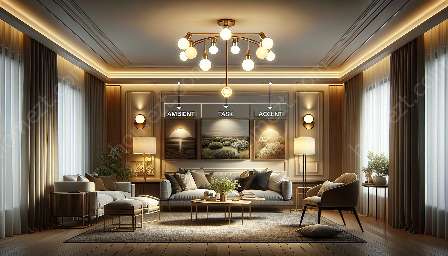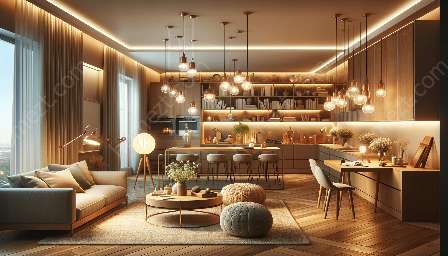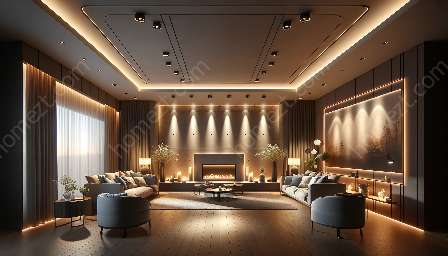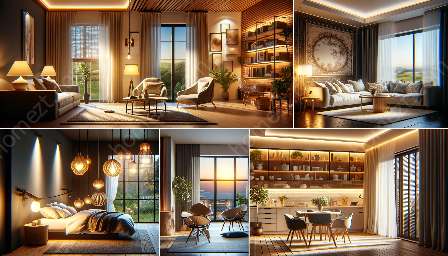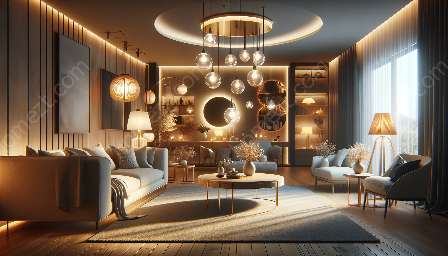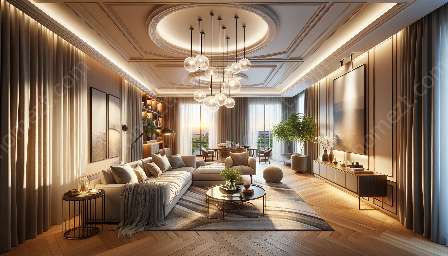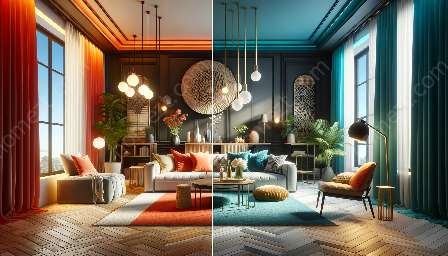Color temperature is a fundamental aspect of color theory, crucial in the context of home furnishings. It refers to the warmth or coolness of a color, impacting the ambiance and mood of interior spaces. To comprehend the significance of color temperature in the realm of home decor, one must delve deep into the concepts of color theory and its practical application in furnishing a home.
The Basics of Color Temperature
Color temperature is often associated with the psychology of color and its emotional effects on individuals. Warm colors such as red, orange, and yellow are considered to have a higher color temperature, evoking feelings of energy, vibrancy, and comfort. On the other hand, cool colors like blue, green, and violet have a lower color temperature, promoting tranquility, relaxation, and spaciousness.
In the context of home furnishings, understanding the nature of color temperature is essential for harmonizing interior elements. By strategically incorporating warm or cool colors, homeowners can create distinct atmospheres within their living spaces, fostering a sense of coherence and style.
Color Theory and Its Interplay with Color Temperature
Color theory serves as the foundation for comprehending color temperature and its implications in home decor. It encompasses the color wheel, color harmony, and the psychological impact of colors, offering valuable insights for decorating interior spaces.
The color wheel, comprising primary, secondary, and tertiary colors, serves as a guide for understanding color relationships. When exploring color temperature, the placement of warm and cool colors on the color wheel becomes crucial. This positioning not only influences the visual balance of a room but also dictates the emotional responses elicited by the color scheme.
The Significance of Color Temperature in Home Furnishings
When considering home furnishings, color temperature plays a pivotal role in defining the aesthetic appeal and functionality of a space. Furniture, wall paint, decor accents, and lighting fixtures all contribute to the overall color scheme, thereby affecting the perceived temperature of the room.
For instance, in a living room designed for relaxation and comfort, choosing furniture in cool hues such as soft blues or tranquil greens can create a calming atmosphere. Conversely, for a vibrant and sociable dining area, opting for warm-toned furnishings like rich reds or invigorating oranges can enhance the sense of conviviality.
Practical Application and Considerations
Integrating color temperature into home furnishings involves a thoughtful approach to color selection and coordination. Understanding the intended purpose of each room allows homeowners to make informed decisions when choosing colors for furniture, walls, and accessories.
Furthermore, the interplay of natural and artificial lighting must be taken into account, as it significantly impacts the perception of color temperature within a space. Proper utilization of lighting can accentuate the warmth or coolness of colors, amplifying the desired ambiance in different areas of the home.
In Conclusion
Color temperature is a multifaceted concept that intertwines with color theory and home furnishings, shaping the visual and emotional elements of interior design. By embracing the principles of color temperature and its interaction with color theory, individuals can elevate their home decor, infusing spaces with character, style, and a welcoming ambiance.




